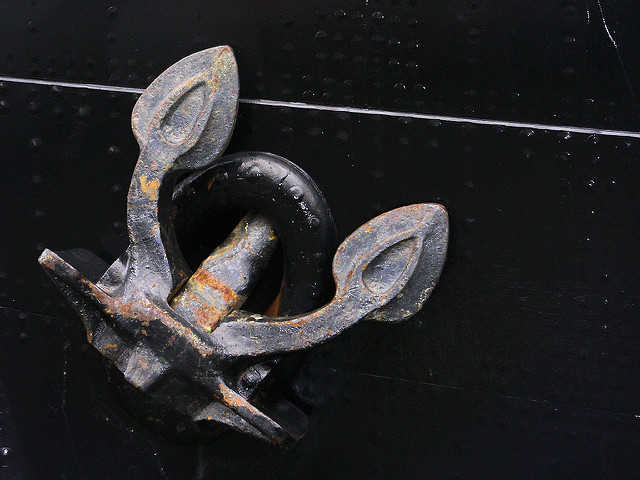
Image Credit: Martin Kleppe
During a negotiation, sometimes something amazing happens. When one side presents a number to the other side, that side can all of suddenly end up irrationally fixating on that first number that was put forth at the bargaining table. This number is called “the anchor”. The other side (or us) can become fixated with it no matter how outlandish it may be. Even when we know the anchor has limited relevance, we can sometimes fail to sufficiently adjust our judgments away from it. This is an example of the anchoring effect in negotiations. Negotiators can use anchoring to reduce risk in a negotiation.
The Power Of Anchoring
In order to understand how best to go about using anchors during the course of a negotiation, one must first take the time to understand what a ZOPA (The Zone of Possible Agreement) at the bargaining table is. During a negotiation, you are going to want to spend some time trying to determine what the ZOPA is while at the same time trying to influence the other side’s perception of the ZOPA. Doing your homework before the negotiations begin will allow you to narrow down just exactly what it is; however, you’ll eventually have to wait until the negotiations start in order to learn what the ZOPA truly is.
One of the things that many new negotiators ask about is if no matter what negotiation styles or negotiating techniques they are using is it a good idea to make the first offer in a negotiation or should they sit back and wait for the other side to do so. It turns out that there are number of reasons why it’s generally a good idea for you to be the one who makes the first offer. Since you are going to have to wait until the negotiations start in order to determine what the ZOPA is, you’re going to find that you are vulnerable to being anchored by the other side. Therefore, anchoring first in price-oriented negotiations can be both a good offense and a good defense.
Making a first offer is defiantly something that you will want to do. However, you are going to have to be careful when you go about doing this. The issue that you are going to have to deal with is determining just how aggressive you want to be when you make your initial offer to the other side. When presenting an overly aggressive offer you risk derailing negotiations if it causes the other side to question your credibility or to wonder whether a negotiated agreement is even possible. You are going to need to tread lightly here.
Reducing Risk Using Anchors
Risk is a part of every negotiation. As negotiators we always need to be looking for ways that we can lower the risk that we are facing. We need to remember that it is hard to know how the other side will view your offer, they may see it as being absurd. Anchoring with a relatively inflexible, extreme offer increases the probability of reaching a stalemate. Anchoring instead with a flexible but extreme offer gives you a lower-risk opportunity to favorably shape the other side’s perceptions of the ZOPA.
The most effective anchors that we can use further reduce risk because, rather than placing firm offers on the bargaining table, they merely introduce relevant numbers. Somebody who was applying for a job may state his belief that people with his qualifications tend to be paid between $75,000 and $85,000 annually, or he might mention that a former colleague just received an offer of $87,000. This assertion is not an offer; it’s an anchor that affects the other side’s perceptions of what the ZOPA is.
Something else that a negotiator can do is to anchor by citing apparently comparable negotiated agreements as precedent. Another approach is to mention proposals made by more extreme elements of one’s constituency. A potential customer might tell a salesperson that, while he loves the product, his purchasing department is undoubtedly going to demand price cuts of 10% or more. Such statements can have an anchoring effect without requiring you to make an extreme offer that could jeopardize talks. As these negotiation examples have shown, sometimes revealing one’s hand is the quickest route to creating value at the bargaining table.
What All Of This Means For You
One of the most powerful negotiating tactics that we have available to us is called “anchoring”. Anchoring occurs when one side presents an initial value to the other side. This value can be outlandish, but no matter. The value will then define the rest of the discussions and will serve as an anchor for all future offers. Anchoring is something that we can use to reduce the amount of risk that there is in a principled negotiation.
In order to use anchoring during a negotiation, you are going to have to first determine what this negotiation’s ZOPA (The Zone of Possible Agreement) is. The negotiations will have to start before you can truly determine what the ZOPA is. You’re not going to want to wait, you’re going to want to be the one who makes the first offer so that you can anchor the negotiations. When you are making the first offer, you will need to be careful to make sure that you are not too aggressive. If you are, then you run the risk of making the other side wonder if a deal is even possible. This means that you are going to want to anchor the negotiations with a flexible but extreme offer. One way that you can anchor is by merely introducing relevant numbers. You can also cite apparently comparable negotiated agreements as precedent.
The goal of any negotiation is to be able to reach a deal with the other side. In order to make this happen, you need them to agree to a deal that you can live with. By making the first offer and anchoring the discussion around a value that works well for you, you improve your chances of being able to walk away with a deal that meets your needs. In your next negotiation, use an anchor to get the deal that you want.
– Dr. Jim Anderson
Blue Elephant Consulting –
Your Source For Real World Negotiating Skills™
Question For You: What should you do if the other side pushes back against your anchor value?
![]() Click here to get automatic updates when The Accidental Negotiator Blog is updated.
Click here to get automatic updates when The Accidental Negotiator Blog is updated.
P.S.: Free subscriptions to The Accidental Negotiator Newsletter are now available. Learn what you need to know to do the job. Subscribe now: Click Here!
What We’ll Be Talking About Next Time
Negotiators view every negotiation as a type of game. They show up ready to use their negotiation styles and negotiating techniques to compete with the other side in order to see who can walk away being a winner. I’m pretty sure that we all realize that we should be cooperating, but instead all too often we end up competing to see who can win. The reason that we do this is because we arrive at the negotiation with the assumption that we’re dealing with a fixed pie – there is only so much to be had, and somebody is going to walk away with more and somebody is going to walk away with less. We view a negotiation as being a win-lose competitive situation. What we really should be doing is working with the other side to find more value in the negotiation.

